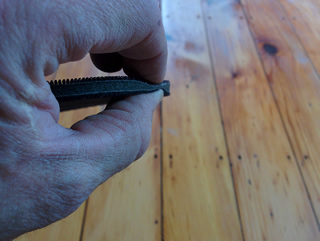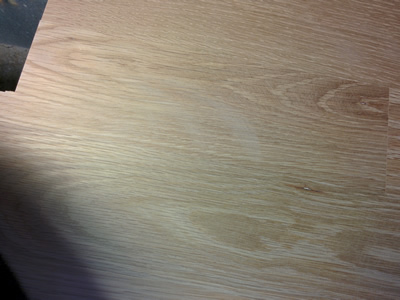
by Everett 2/15/2017

When we purchased our Bona Multidisc 6 head buffer attachment, it came with optional soft pads that you could install between the stock pads and the abrasives to lessen the aggressiveness and leave a smoother scratch pattern. The Multidisc itself was a game changer for us right out of the gates as we had only ever used a hard plate and screens with the buffer. For years we dealt with swirls on stain jobs and would occasionally just get lucky with a particular color that didn't show them. The Multidisc was a big step up from that paradigm but the focus on this article will be on a different subject. The other use we had in mind for the Multidisc was flattening the floor between big machine passes and going around the edge with coarse grits to lessen the amount of edging we had to do.
It was certainly an improvement over what we had been doing but it wasn't a panacea to our wave and dishout issues. And it also helped with edging but it did kind of take a while and I would often wonder if it was worth it. Then one day I started thinking about the optional soft pads that came with it. If you add a softer pad to lessen aggressiveness, what if you added a "harder" pad to increase aggressiveness? All the soft pad is is a soft foam with hook on one side, and loop on the other. So all I had to do was procure some hard discs 5 inches in diameter and get some peel and stick velcro for them.
Luckily my brother works in the steel industry, so it was no problem for him to have a buddy water jet out a set of steel discs for me. At first it was difficult to locate the velcro but eventually I found a source for that so everything was set into motion. The only worry was, is this even going to work? When I slap these things on there and pull the trigger on the buffer, are they just going to fly out from under it? I'd like to say I was confident but there was a lot of self doubt.

Well I probably wouldn't have written about this if it was a failure, so spoiler alert- it was a complete success. The maiden voyage for them was an installation of 3 1/4" white oak, I just started in the middle to see how it would do against overwood. Used 60s whacked it right down. From there it was just a matter of determining how this would fit in with our existing systems. I was pretty sure we would be using it to flatten the floor with 60 after the 60 big machine pass. What I learned right away is that you could see waves and dishout as you were cutting it out. All low spots appear lighter in color so you just bear down on those spots until they're gone.

The other task we wanted to explore was hitting the edge with it. Again with 60 grit I ventured around the edge and it cut the floor flat all the way to within about an inch and a half of the wall, sometimes closer. Then towards the end of the job as I was using 120 as the final pass with the steel discs, I started seeing slight edger digs and bad feathering with the big machine, again, it took them right out. I was thinking to myself that this seems like it's going to revolutionize this small aspect of the industry. I was picturing using these things on Bona Powerdrives and Lagler Trios (I later learned that the Trio already has hard metal pads). Then my parade was rained on. I proudly posted about my new invention online only to learn that someone had done it years ago but bought a Trio and put it on the shelf.
Meh, I don't care about getting credit, I just care about genuinely good ideas getting out there so we can all improve our ability to produce beautifully flat floors.


